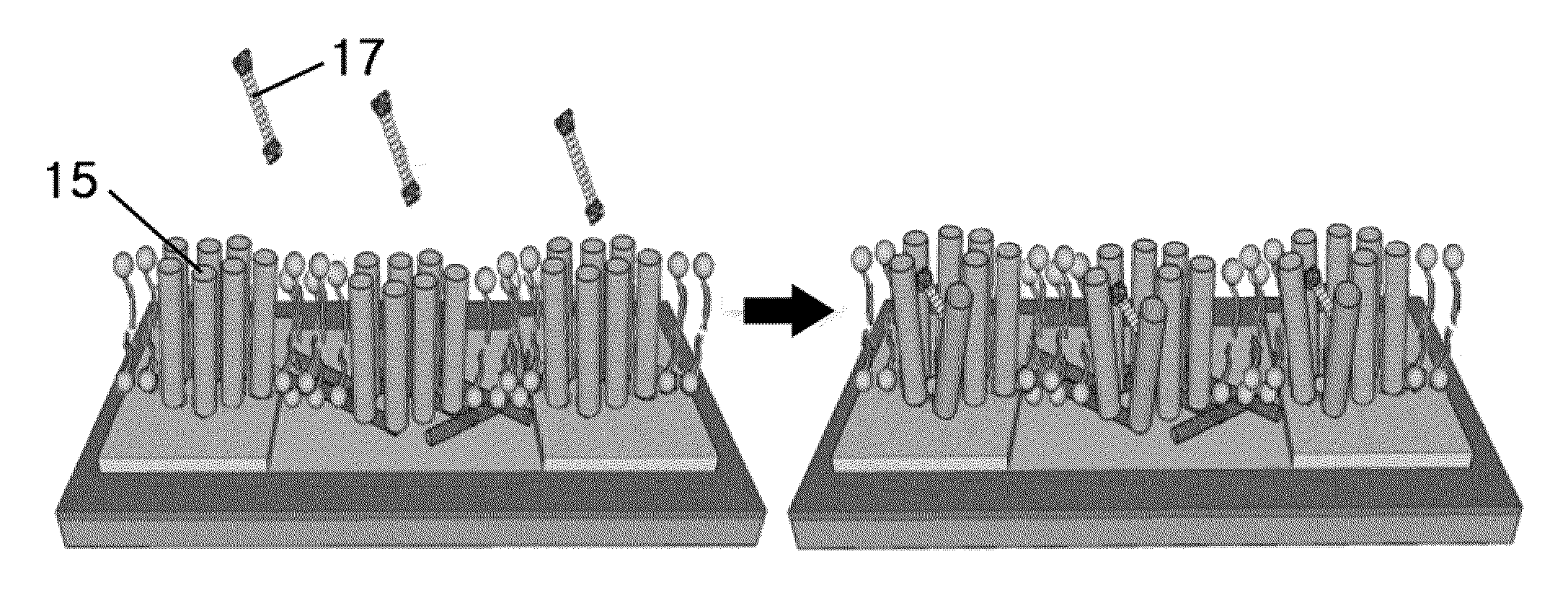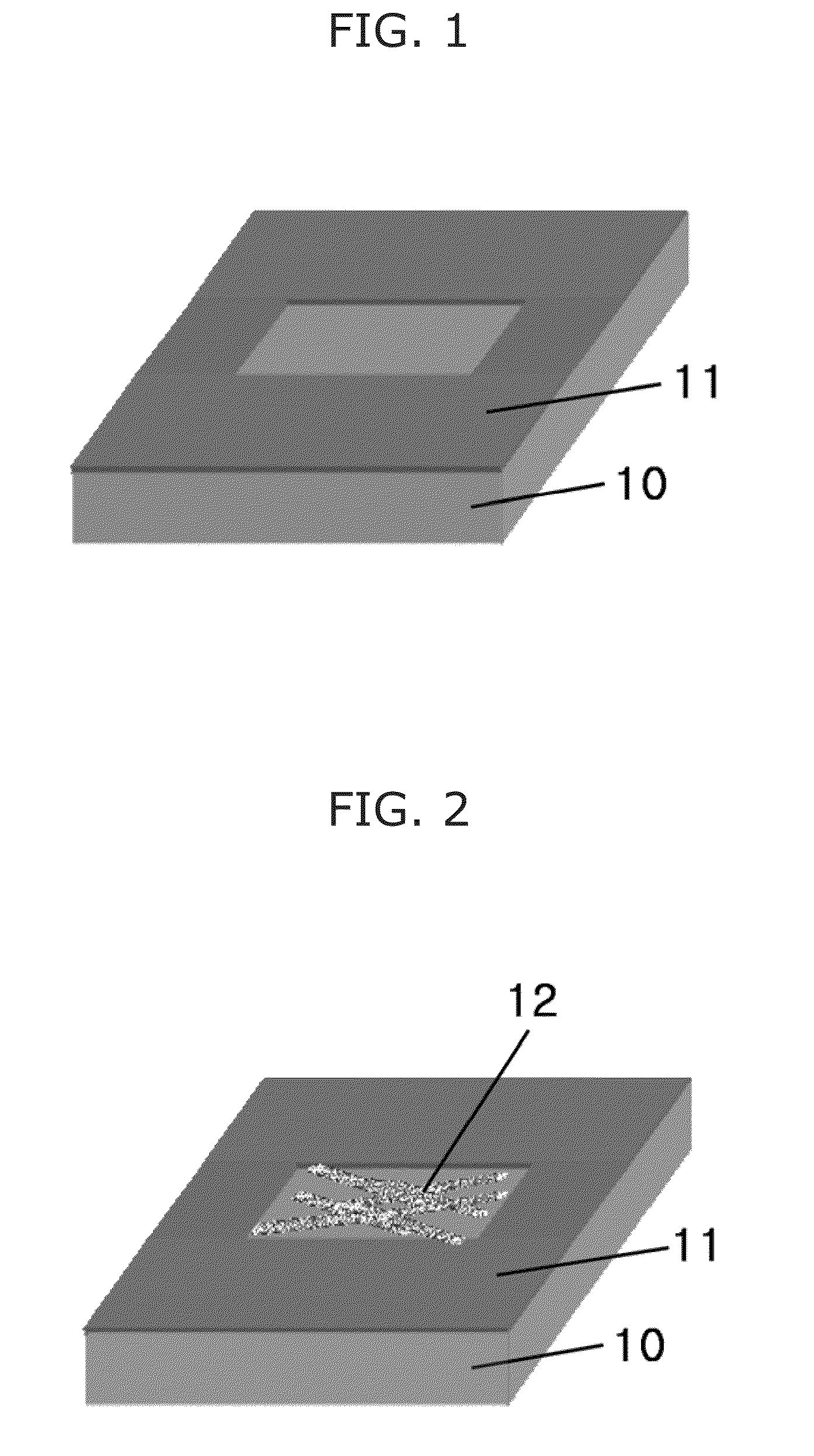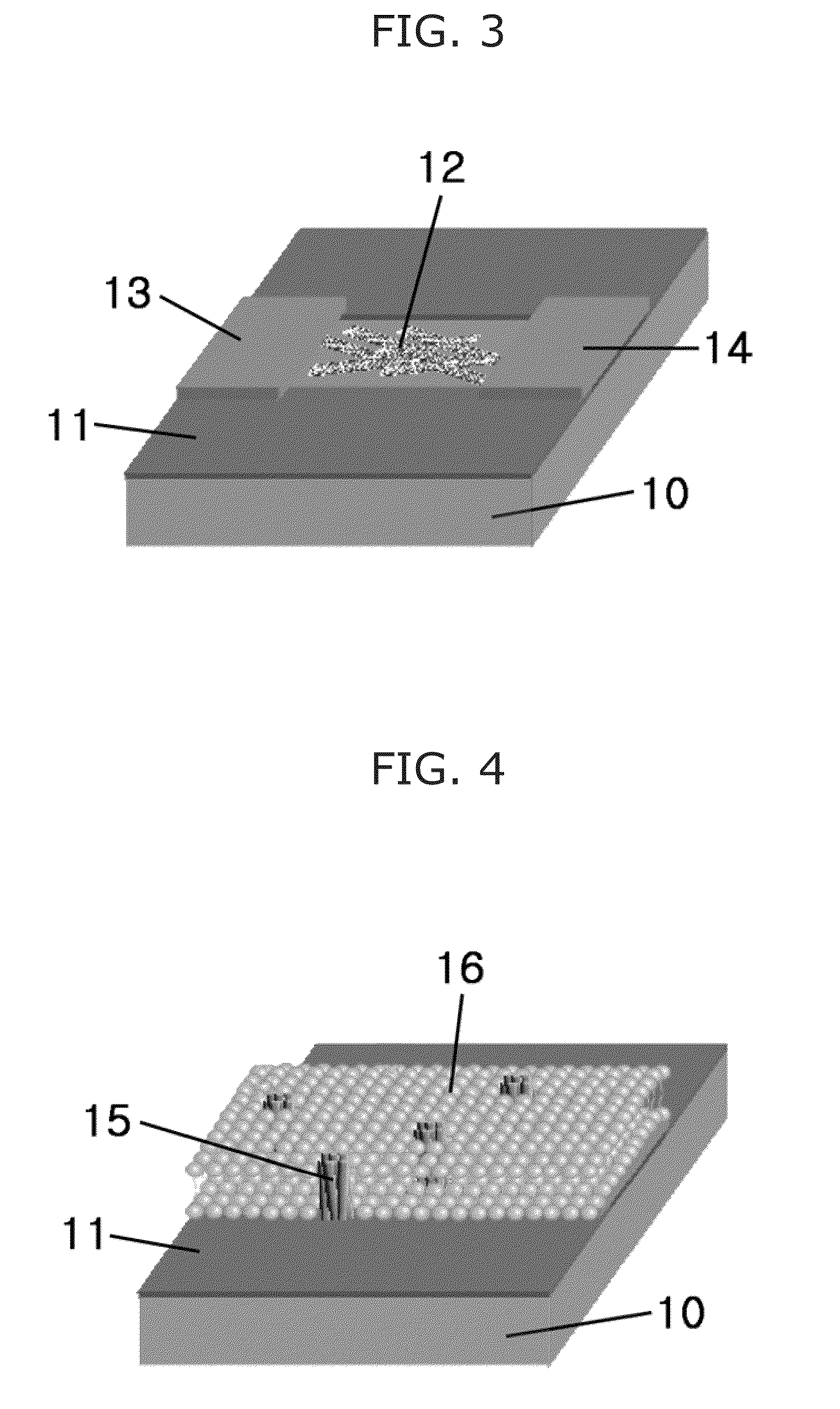Olfactory receptor-functionalized transistors for highly selective bioelectronic nose and biosensor using the same
- Summary
- Abstract
- Description
- Claims
- Application Information
AI Technical Summary
Benefits of technology
Problems solved by technology
Method used
Image
Examples
example
Example 1
Preparation, Immunoblot Analysis, and Electron Microscopy of an Olfactory Receptor Protein
[0061](1) Preparation of Human Olfactory Receptor 2AG1 Protein (hOR2AG1)
[0062]As an olfactory receptor protein, human olfactory receptor 2AG1 (hOR2AG1) protein was used. The hOR1AG1 protein is a fusion protein with a glutathione-S-transferase (GST)-tag at the N-terminus, which is expressed in Escherichia coli (E. coli).
[0063]The cultured cells were centrifuged at 7,000 g for 30 min, harvested, and resuspended in 1 ml of phosphate buffered saline (PBS). The resuspended cells were dissolved by an ultrasonic treatment for 5 min, and insoluble fractions including membrane fractions and cell debris were centrifuged at 15,000 g for 30 min and collected. Subsequently, to remove membrane-incorporated proteins other than the hOR1AG1, insoluble fractions including the hOR2AG1 were incubated in a solution containing 2 vol % Triton X-100, and then membrane fractions containing hOR2AG1 were collect...
example 2
Manufacture of Human Olfactory Receptor-Functionalized Transistors
[0070]First, purified single-walled carbon nanotubes (swCNTs) (Carbon Nanotechnologies) were dispersed in 1,2-dichlorobenzene with ultrasonic vibration for 20 min to prepare a swCNT suspension. The concentration of the swCNT suspension was 0.1 mg / ml or less.
[0071]An octadecyltrichlorosilane (OTS) self-assembled monolayer (SAM) was patterned by photolithography technique on a degenerately doped silicon substrate covered with a 300 nm thick thermal oxide layer. The patterned substrate was put in the swCNT suspension generally for about 10 sec and rinsed with 1,2-dichlorobenzene. The swCNT was selectively adsorbed on a bare portion of the substrate, in which the OTS was not formed. After a typical photolithography, contact electrodes were fabricated by Au / Pd (30 nm / nm) evaporation and lift-off methods. The gap between source and drain electrodes was 4 μm.
[0072]1 μl of the hOR2AG1-containing fraction collected in Example ...
example 3
Measurement of Effects of Odorants on Biosensor Using Human Olfactory Receptor-Functionalized Transistors of the Present Invention
[0073]To measure the effects of odorants on the biosensor using human olfactory receptor functionalized transistors, drops of 9 μl phosphate buffered saline (PBS) were placed onto the human olfactory receptor functionalized transistors manufactured in Example 1. Subsequently, the source-drain current was monitored after the introduction of a solution containing specific odorants. A bias voltage of 100 mV was maintained at all time during the electrical measurement (See FIG. 8).
[0074]FIG. 9 shows four similar odorants (amyl butyrate (AB), butyl butyrate (BB), propyl butyrate(PB), and pentyl valerate (PV)) used for characterization of sensor reactions.
[0075]A 1 M stock solution of the odorants was prepared, and additional dilutions (from 10−1 M to 10−13 M) were obtained by serial 1:10 dilutions in PBS.
[0076]The hOR2AG1 is known to be activated by amyl butyr...
PUM
| Property | Measurement | Unit |
|---|---|---|
| Molar density | aaaaa | aaaaa |
| Molar density | aaaaa | aaaaa |
| Molar density | aaaaa | aaaaa |
Abstract
Description
Claims
Application Information
 Login to View More
Login to View More - R&D
- Intellectual Property
- Life Sciences
- Materials
- Tech Scout
- Unparalleled Data Quality
- Higher Quality Content
- 60% Fewer Hallucinations
Browse by: Latest US Patents, China's latest patents, Technical Efficacy Thesaurus, Application Domain, Technology Topic, Popular Technical Reports.
© 2025 PatSnap. All rights reserved.Legal|Privacy policy|Modern Slavery Act Transparency Statement|Sitemap|About US| Contact US: help@patsnap.com



